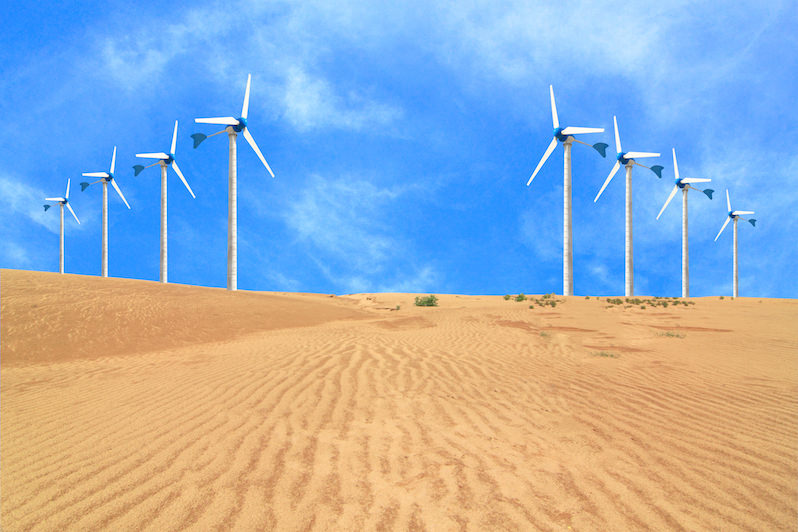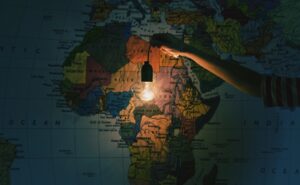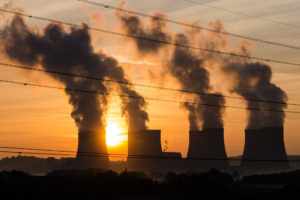In Morocco, the Dawn of a Green Energy Revolution
In the Arab world, Morocco is the most serious about renewable energy, which is now powering its transformation from a poverty-stricken agricultural country to a modern industrial nation. Morocco is the Arab nation most serious about renewable energy, which is transforming it from a poverty-stricken agricultural economy to a modern industrial one. Shutterstock
Shutterstock
American attention in the Middle East is usually directed by our press to the oil and gas giants of the Gulf. Saudi Arabia, Iran and Iraq all loom large in our collective consciousness, even though they are not typical of the region.
Important countries such as Morocco, Egypt and Turkey mostly lack these hydrocarbon resources and so are barely mentioned in American television news programs. Morocco in particular gets less coverage than the moons of Jupiter. But in ways that are escaping most observers, its aggressive green energy plans are likely much more representative of the future of the Arab world than are those of the petrostates. Moreover, this development would be a good thing, putting energy wars off the agenda and shifting wealth and cultural power from the archconservative Gulf to more cosmopolitan Arab centers.
The Moroccan government is the one in the Arab world most serious about renewable energy. It imports 95 percent of its fuel, a huge annual outlay for a relatively poor country (with a population of 33 million, and nominal gross domestic product of $103 billion). Worse, that government heavily subsidizes fuel costs for citizens, costing additional billions each year.
The beauty of renewables for a country with a moral economy like Morocco’s is that the fuel is free and so requires no subsidies. The costs would be for equipment, installation and grid infrastructure. No wonder the Moroccan government has set a goal of getting 42 percent of its electricity from renewable sources by 2020, only five years from now.
Green energy is no pipe dream for Morocco but rather is powering its transformation from a poverty-stricken agricultural country to a modern industrial nation. Its Tanger Renault auto plant, which opened in Tangiers in 2012, is designed to be as close as possible to net carbon zero, powered by a wind farm and hydroelectricity. It also avoids industrial effluents. The plant’s 160,000 units a year are now Morocco’s major export item, and the auto industry is beginning to fuel the growth of the country’s gross domestic product. This development is dizzying.
I visited Morocco first as a child in the 1950s, when Detroit’s population was 2 million and its auto industry ruled the world; at that time, Morocco’s people were mostly illiterate villagers, many of them engaged in subsistence agriculture or pastoral sheep- and goat-herding. Now, Detroit is a shadow of its former self, and Tangiers is poised to become Africa’s Motor City.
Even now there are no low-carbon auto plants in Michigan, and the state’s plans for shifting to clean, increasingly inexpensive renewable energy are anemic. By using green energy to industrialize, Morocco can also preserve its environment and attractiveness for tourists, avoiding the mistakes China made in rendering its historic cities smog-laden.
Ouarzazate is an Amazigh (Berber-speaking) town of 60,000 or so on the edge of the Sahara. It is beloved of Hollywood. Many major productions, from “Lawrence of Arabia” and “Gladiator” to “Game of Thrones,” have been filmed there. But the medieval-style walled city’s adobe beehive architecture is not the only thing for which it will be famous. At least a fourth of all the 2 gigawatts of new solar power commissioned by the Moroccan Agency for Solar Energy will be generated there.
By the end of this year, the first of four concentrated solar plants, Noor I, will be operational. A consortium that includes Saudi Arabia’s ACWA and Spain’s Abengoa has been prequalified to develop the second two, Nour II and Nour III. The building of a fourth, 50-megawatt solar plant is now being explored at the complex.
Noor I’s electricity will cost 15 cents per kilowatt-hour, a tiny bit more than the U.S. average of 12 cents per kilowatt-hour. (A kilowatt-hour is the electricity consumed by a 100-watt light bulb burning for 10 hours.) But since the Moroccan government would ordinarily be under political pressure to subsidize natural gas to bring down electricity costs for the poverty-stricken population, this rate is actually a bargain for the country — there is no fuel to subsidize. Moreover, it increases Morocco’s independence of the natural gas suppliers, and reduces the country’s trade deficit.
The price of solar in the region is also coming down. Dubai Electricity & Water Authority was just able to secure a 25-year tariff of six cents per kilowatt-hour — lower than what natural gas would have cost — for a solar photovoltaic plant with a 100-megawatt capacity. As a sidebar, it should be noted that the notion that coal, for example, produces electricity cheaply is a fantasy arrived at by refusing to figure in its real cost in environmental damage, given practices such as mountaintop-removal mining. If the pollution impact of coal and natural gas were taken into account, some scientists, such as Drew Shindell, professor of climate sciences at Duke University, estimate their true cost at 42 and 17 cents per kilowatt-hour, respectively. Morocco is vulnerable to the desertification and sea level rise that will come with climate change and is doing itself a favor by joining the effort to limit global carbon-dioxide emissions.
Solar is only part of Morocco’s strategy. The 300-megawatt wind farm in Tarfaya is now online, powering 1.5 million households. Morocco plans another 1.7 gigawatts in wind-energy generation in just the next five years. (The Tarfaya complex only took two years to construct once work began.)
The headlines about foreign policy in the U.S. mainstream media are all about Iraq, with its oil fields at Basra and Kirkuk, and its pipelines; or Saudi Arabia, which has used its oil wealth to buy up F-16s with which to bomb its enemies, such as the Houthis in Yemen. But these petro-economies, with their resource wars and smuggling cartels like the Islamic State group, are dinosaurs. Oil, gas and coal generate carbon dioxide and methane — extremely powerful greenhouse gases — when they are produced and burned. They need to be banned as quickly as possible.
As forms of highly concentrated energy in a limited geographical area, hydrocarbons foster resource wars. However, wind and solar energy are everywhere, and their price is dropping so fast that a wise government, like that of Morocco, will hitch its future to them.
The U.S. itself is in danger of being left behind economically because of its elites’ irrational obsession with dirty, expensive sources of energy that endanger the world. It is the lean, hungry countries of the Global South that point us to the future.
Your support is crucial...As we navigate an uncertain 2025, with a new administration questioning press freedoms, the risks are clear: our ability to report freely is under threat.
Your tax-deductible donation enables us to dig deeper, delivering fearless investigative reporting and analysis that exposes the reality beneath the headlines — without compromise.
Now is the time to take action. Stand with our courageous journalists. Donate today to protect a free press, uphold democracy and uncover the stories that need to be told.







You need to be a supporter to comment.
There are currently no responses to this article.
Be the first to respond.